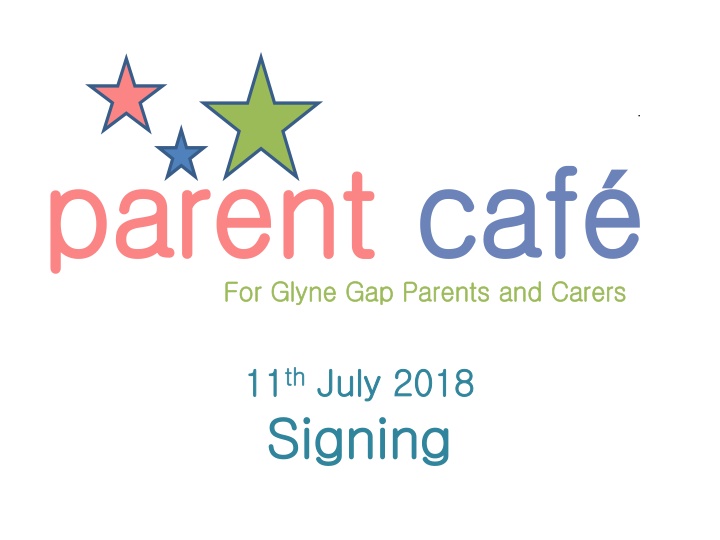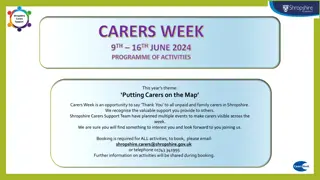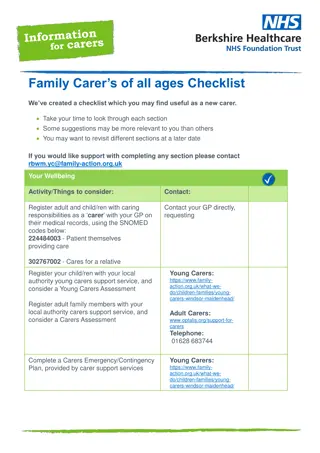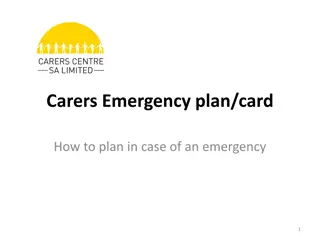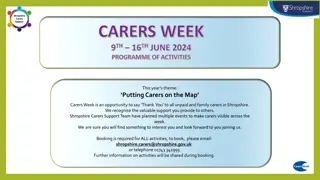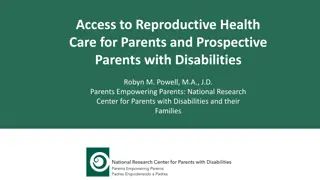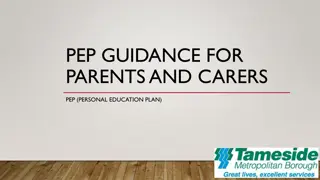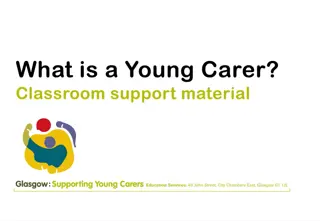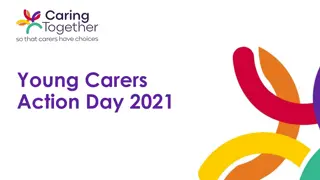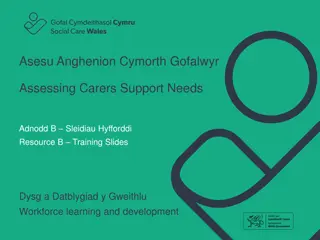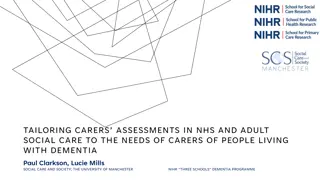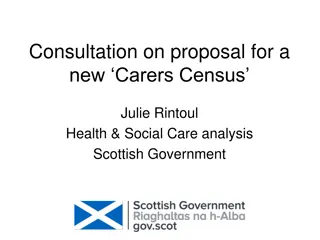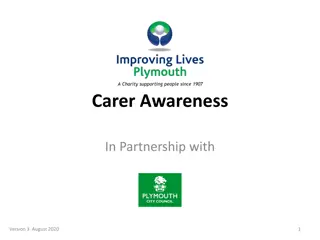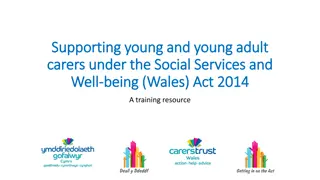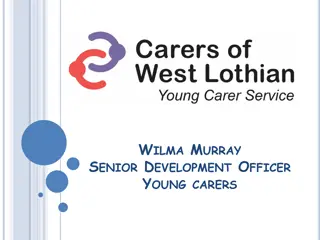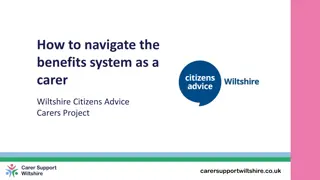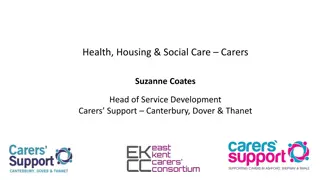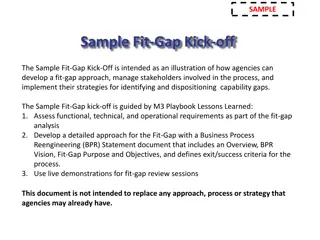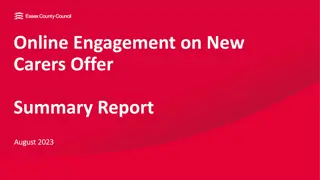Glyne Gap Parents & Carers Communication Workshop
This workshop on communication features various activities and discussions on the use of signs, communication systems, and supporting a child's receptive and expressive skills. It includes icebreaker exercises and explores the significance of sign language in enhancing understanding. Participants engage in practical exercises to enhance their communication abilities. The event also delves into the importance of visual aids in communication and total communication methods to express ideas effectively.
Download Presentation

Please find below an Image/Link to download the presentation.
The content on the website is provided AS IS for your information and personal use only. It may not be sold, licensed, or shared on other websites without obtaining consent from the author.If you encounter any issues during the download, it is possible that the publisher has removed the file from their server.
You are allowed to download the files provided on this website for personal or commercial use, subject to the condition that they are used lawfully. All files are the property of their respective owners.
The content on the website is provided AS IS for your information and personal use only. It may not be sold, licensed, or shared on other websites without obtaining consent from the author.
E N D
Presentation Transcript
25th April 2018 parent parent caf For Glyne Gap Parents and C For Glyne Gap Parents and Carers caf arers 11 11th th July 2018 July 2018 Signing Signing
The Communication Team. The Communication Team . We are a multi-disciplinary team Work in collaboration with every class to ensure every pupil has a communication programme Provide a range of additional support Work on development projects
This morning well talk about... This morning we ll talk about... Why we use signs Why we use signs What sign systems we use What sign systems we use How you could use signs to support How you could use signs to support your child s receptive and expressive your child s receptive and expressive skills skills Practise, Practise, Practise!! Practise, Practise, Practise!!
A Little Ice Breaker! A Little Ice Breaker! Get into pairs or small groups Get into pairs or small groups Both of you imagine you don t understand or use Both of you imagine you don t understand or use speech, reading or writing. speech, reading or writing. Each of you will be given a sentence Each of you will be given a sentence don t let don t let your partner/group see it! your partner/group see it! You need to communicate the sentence and see if You need to communicate the sentence and see if you can be understood! you can be understood!
How did that feel? How did that feel? How did you communicate? How did you communicate?
Why do we sign? Why do we sign? Signs give clues to the meanings of words If key information is given in a visual way, it gives the child another opportunity to understand what is being said. This is because: It slows our communication down It slows our communication down and and It simplifies our communication It simplifies our communication
Understanding Understanding Total Communication Total Communication Expression Expression
The Communication Ladder The Communication Ladder 6 6) Words; Written or spoken ) Words; Written or spoken 5) Black & white symbol 5) Black & white symbol 4) Colour picture 4) Colour picture Signing 3) Colour Photo s 3) Colour Photo s 2) 2) Pretend object, e.g. a toy Pretend object, e.g. a toy 1) The real object 1) The real object
visuals are useful in helping a child to make sense of routines, to understand what is going to happen next .. If you use visuals to back up your language, you are giving pupils two chances to understand they can hear your words and see the visuals. The visuals stay there, spoken words disappear!!!
What sign systems do What sign systems do we use we use? Primary system is Makaton Primary system is Makaton Refer to Communication Link & BSL Refer to Communication Link & BSL At times we mime or agree a At times we mime or agree a Glyne Gap Sign (topic vocabulary) Gap Sign (topic vocabulary) Glyne We use on body signing for pupils We use on body signing for pupils with sensory impairments with sensory impairments
What signs will we learn What signs will we learn today? today? Common objects Common objects Food related signs Food related signs Feelings/opinions Feelings/opinions Words that can empower your child and Words that can empower your child and support your directions support your directions Greetings Greetings People/pronouns People/pronouns Activities and doing words Activities and doing words Places Places Time related words Time related words Question words Question words
Lets go! Let s go! Angry Angry Apple Apple Bag Bag Biscuit Biscuit Book Book Brother Brother Brush teeth Brush teeth Bus Bus Banana Banana Bowl Bowl Bath (to have) Bath (to have) Car Car Calm Calm Chair Chair Choose Choose Clean Clean Coat Coat Cold Cold College College Chocolate Chocolate Cereal Cereal Dad Dad Dinner Dinner Dirty Dirty Don t like Don t like
Tips for Effective Tips for Effective Signing Signing Use clear speech and signs Use clear speech and signs Use facial expression and body language Use facial expression and body language to enhance meaning to enhance meaning You can use mime or gesture You can use mime or gesture Remember you don t need lots of words Remember you don t need lots of words or signs to express what you mean! or signs to express what you mean!
Second Chunk! Second Chunk! Drink Drink Do Do Finish Finish Friend Friend Fruit Fruit Fork Fork Food/eat Food/eat Get Up Get Up Give Give Go Go Good Good Goodbye Goodbye Happy Happy Hello Hello Help Help Home Home How are you? How are you? Hungry Hungry I I Ill Ill Knife Knife Learn Learn Like Like Listen Listen Look Look
Time for a break! Time for a break!
Third Chunk! Third Chunk! More More Mum Mum Music Music Meat Meat Milk Milk Money Money Next Next No No Noisy Noisy Now Now Outside Outside Orange Orange Pad/Nappy Pad/Nappy Pain Pain Play Play Private Private Pudding Pudding Plate Plate Packed Lunch Packed Lunch Quiet Quiet Respite Respite Sad Sad School School Share Share Shop Shop
Signing Techniques Signing Techniques Directionality Directionality direction in which the direction in which the signs move signs move Placement Placement where the signs are made where the signs are made Movement Movement the use of body language to the use of body language to add meaning add meaning
Nearly There! Nearly There! Sister Sister Shower Shower Spoon Spoon Sitting Sitting Sleep Sleep Sorry Sorry Stop Stop Table Table Taxi Taxi Think Think Thirsty Thirsty Today Today Toilet Toilet Toy Toy Talk Talk Toast Toast Vegetable Vegetable Wait Wait Want Want Wash Wash What? What? Where? Where? Work Work Yes Yes You You
Lets Practice Let s Practice In pairs or small groups, have a go at In pairs or small groups, have a go at signing the sentences given out. signing the sentences given out.
Where do we start?! Where do we start?! Don t feel you have to use all the signs at Don t feel you have to use all the signs at once, think about the ones that will be once, think about the ones that will be useful to help your child understand or useful to help your child understand or learn to use. Keep it simple! learn to use. Keep it simple! Remember your child will understand more Remember your child will understand more signs/words than they can express. signs/words than they can express.
Where do we start?! Where do we start?! When do I sign?...To start with make it When do I sign?...To start with make it easy for yourself easy for yourself mealtimes, bath time, mealtimes, bath time, bedtime bedtime Where do I sign?....Anywhere! Where do I sign?....Anywhere! If I don t know a sign?....Mime, point, If I don t know a sign?....Mime, point, gesture and then ask class or us gesture and then ask class or us
You did it! You did it!
